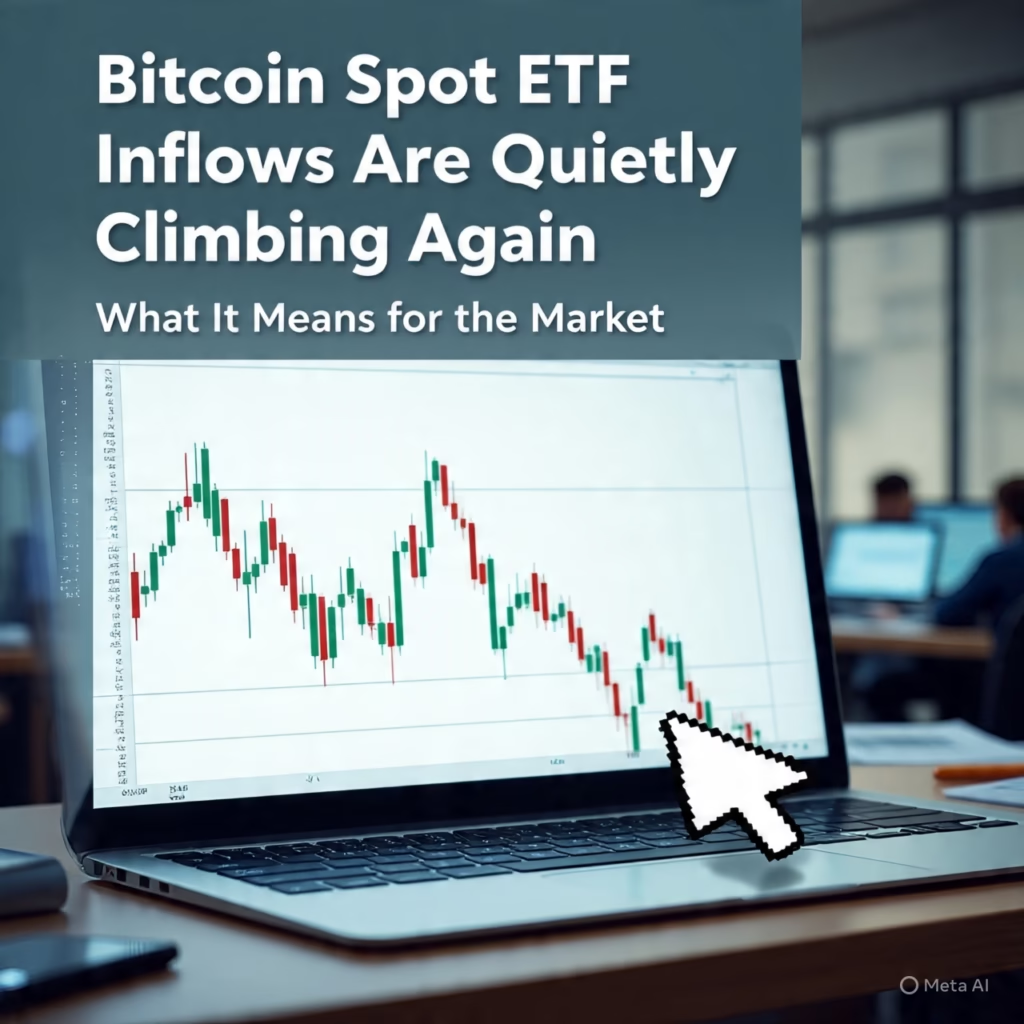Introduction.
Bitcoin Spot ETF Inflows Are Quietly Climbing Again — What It Means for the Market
Not long ago, headlines were filled with disappointment as Bitcoin spot ETFs experienced a series of outflows and stalled momentum. But fast forward to late July, and the tide appears to be turning. Quietly, and without much fanfare, money is flowing back into Bitcoin ETFs — and it’s catching the attention of serious investors.
This rebound in ETF activity isn’t explosive. It’s not a bull stampede. But it’s steady — and perhaps more importantly, it’s consistent. In a market where confidence can be as volatile as prices, that’s saying something.
A Slow, Steady Turnaround
For weeks, Bitcoin ETFs were drifting. Daily net flows were either flat or negative. After their historic U.S. introduction earlier this year, the buzz had subsided. A broad awareness of cautiously, regulation confusion, and instability pushed many investors out of the market.
Then came a quiet shift.
Last week, BlackRock’s iShares Bitcoin Trust (IBIT) posted several consecutive days of positive inflows. Fidelity’s Wise Origin Bitcoin Fund followed suit. Even ARK 21Shares, which had seen intermittent withdrawals in June, started posting modest gains again.
These aren’t blockbuster numbers. But they matter.
Because the investors coming back? They’re not Reddit day traders. They’re not speculative whales looking to flip quick profits. This round of inflows appears to be institutional — the kind of capital that moves slowly, strategically, and with long-term conviction.
Why Now?
A few factors are working in Bitcoin’s favor, and they help explain why ETF inflows are inching upward again.
1. Bitcoin Price Is Holding Ground
Bitcoin has managed to maintain levels above the $100,000 mark — a psychologically important barrier. That stability is reassuring, especially to traditional investors who are more accustomed to blue-chip stocks than crypto chaos.
When Bitcoin holds its ground, ETFs become more attractive as low-volatility, regulated access points.
2. Regulatory Overhang Is Easing (Slightly)
While U.S. crypto regulation remains a work in progress, the tone from Washington has softened in recent weeks. SEC Chair Gary Gensler has made fewer combative statements, and whispers around a more coherent framework for crypto oversight are making their rounds.
It’s not a green light, but it’s no longer flashing red either. For some institutions, that’s enough to re-engage.
3. A Change in the Overarching Approach
Interest rate uncertainty, ongoing inflation concerns, and geopolitical volatility continue to plague traditional markets. Bitcoin is starting to appear less like a dangerous wager and more like a respectable hedge to certain asset managers.
And when you want Bitcoin exposure, ETFs are the cleanest route. You don’t need to worry about custody, private keys, or exchanges. Just buy shares like you would with Apple or gold.
Signs It’s Institutional
Look at the wallet data. Look at the trade sizes. Look at the flow patterns.
Analysts from firms like CoinShares and Galaxy Digital have noted that the recent ETF activity has all the hallmarks of institutional participation. We’re not seeing erratic volume spikes or sudden dumps. We’re seeing orderly accumulation.
In parallel, CME’s Bitcoin futures open interest has been climbing again — another signal that large players are dipping their toes back into the water.
It’s Not a Frenzy — and That’s a Good Thing
In some ways, the lack of hype is exactly what makes this rebound feel more legitimate. This isn’t 2021. There are no celebrity endorsements, no Dogecoin memes driving retail into a frenzy. What we’re seeing is quiet capital moving in.
And that’s often how real market momentum begins — in silence.
Still, it’s too early to declare this the start of another bull cycle. ETF volumes remain well below the highs seen in March. And any number of external events — from inflation data to global conflict — could shift sentiment again.
But for now, the direction of travel is positive.
The Halving Effect in the Background
Don’t forget that Bitcoin’s most recent halving was just three months ago. Historically, price appreciation following a halving isn’t immediate — it takes time. Often, the real market movement starts several months afterward.
ETF inflows rising now could be part of that slow-building response. If supply is tightening and demand is creeping up — even modestly — the price pressure will build.
Institutional investors know this. They’re not chasing the price; they’re positioning early.
Looking Ahead
As we head into the latter half of Q3, all eyes will be on whether this uptick in ETF interest continues. If Bitcoin remains stable above $100K and macro conditions stay neutral, there’s a strong case that flows will build.
That would mean more capital moving into ETFs. More long-term holders. And more confidence that the era of institutional Bitcoin adoption isn’t over — it’s just getting started.
And perhaps that’s the real takeaway: sometimes the most important market moves don’t come with fireworks. They come with a quiet hum in the background — and this hum is starting to sound like a revival.
might you like to read this blog.
Tornado Cash Co-founder to Face Trial:

Leave a Reply